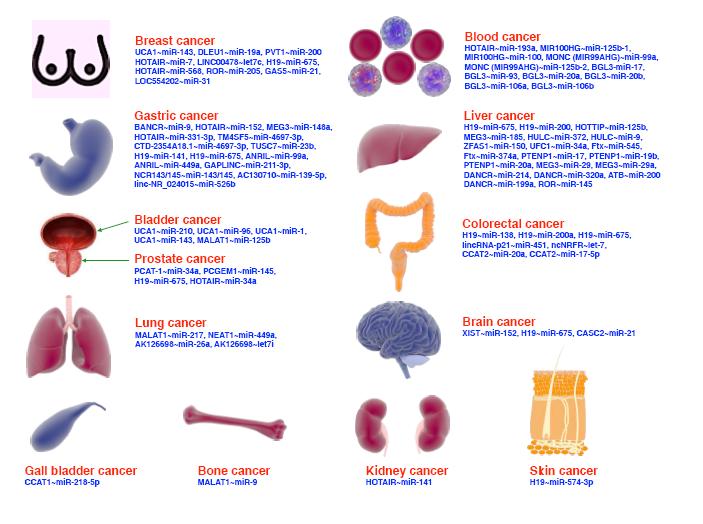| 1. |
Fu Y, Yang T, Liang P, et al. A case of asymptomatic tracheoesophageal fistula. Ear Nose Throat J, 2023, 102(9): 1455613231200810.
|
| 2. |
Kim HS, Khemasuwan D, Diaz-Mendoza J, et al. Management of tracheo-oesophageal fistula in adults. Eur Respir Rev, 2020, 29(158): 200094.
|
| 3. |
Bibas BJ, Guerreiro Cardoso PF, Minamoto H, et al. Surgical management of benign acquired tracheoesophageal fistulas: a ten-year experience. Ann Thorac Surg, 2016, 102(4): 1081-1087.
|
| 4. |
Lagrotta G, Ayad M, Butt I, et al. Cardiac arrest due to massive aspiration from a broncho-esophageal fistula: A case report. World J Crit Care Med, 2022, 11(5): 335-341.
|
| 5. |
Zeng A, Liu X, Shaik MS, et al. Surgical strategies for benign acquired tracheoesophageal fistula. Eur J Cardiothorac Surg, 2024, 65(2): ezae047.
|
| 6. |
Bibas BJ, Cardoso PFG, Minamoto H, et al. Surgery for intrathoracic tracheoesophageal and bronchoesophageal fistula. Ann Transl Med, 2018, 6(11): 210.
|
| 7. |
Gurram RP, Gnanasekaran S, Kalayarasan R, et al. Stapled repair of benign acquired tracheoesophageal fistula: description of novel technique and assessment of outcomes. Cureus, 2020, 12(8): e9854.
|
| 8. |
Dai J, He W, Liu X, et al. Use of an autologous dermal flap and rib cartilage graft in the repair of a large tracheoesophageal fistula with tracheal stenosis. Interdiscip Cardiovasc Thorac Surg, 2023, 37(2): ivad130.
|
| 9. |
Marulli G, Loizzi M, Cardillo G, et al. Early and late outcome after surgical treatment of acquired non-malignant tracheo-oesophageal fistulae. Eur J Cardiothorac Surg, 2013, 43(6): e155-e161.
|
| 10. |
Hasan L, Sharma B, Goldenberg SA. Acquired tracheoesophageal fistulas: a case report and review of diagnostic and management challenges. Cureus, 2022, 14(3): e23324.
|
| 11. |
Silon B, Siddiqui AA, Taylor LJ, et al. Endoscopic management of esophagorespiratory fistulas: a multicenter retrospective study of techniques and outcomes. Dig Dis Sci, 2017, 62(2): 424-431.
|
| 12. |
Ali O, Singh G, Kolachana S, et al. Successful closure of a tracheoesophageal fistula using an over-the-scope clip. Cureus, 2023, 15(4): e37577.
|
| 13. |
Debourdeau A, Gonzalez JM, Dutau H, et al. Endoscopic treatment of nonmalignant tracheoesophageal and bronchoesophageal fistula: results and prognostic factors for its success. Surg Endosc, 2019, 33(2): 549-556.
|
| 14. |
Kim SP, Lee J, Lee SK, et al. Surgical treatment outcomes of acquired benign tracheoesophageal fistula: a literature review. J Chest Surg, 2021, 54(3): 206-213.
|
| 15. |
Amore D, Casazza D, Rispoli M, et al. Acquired benign tracheoesophageal fistula: an alternative tracheoplastic technique. Ann Thorac Cardiovasc Surg, 2022, 28(6): 377-380.
|
| 16. |
Yang G, Li WM, Zhao JB, et al. A novel surgical method for acquired non-malignant complicated tracheoesophageal and bronchial-gastric stump fistula: The “double patch” technique. J Thorac Dis, 2016, 8(11): 3225-3231.
|
| 17. |
Mammana M, Comacchio GM, Schiavon M, et al. Repair of adult benign tracheoesophageal fistulae with absorbable patches: Single-center experience. Ann Thorac Surg, 2020, 109(4): 1086-1094.
|
| 18. |
Lane C, Wright M, Linton J, et al. Surgical closure of enlarged tracheoesophageal fistula after laryngectomy: A systematic review of techniques. Am J Otolaryngol, 2024, 45(1): 104023.
|
| 19. |
Bertheuil N, Duisit J, Isola N, et al. Perforator-based intercostal artery muscle flap: A novel approach for the treatment of tracheoesophageal or bronchoesophageal fistulas. Plast Reconstr Surg, 2021, 147(5): 795e-800e.
|
| 20. |
Hammoudeh ZS, Gursel E, Baciewicz FA Jr. Split latissimus dorsi muscle flap repair of acquired, nonmalignant, intrathoracic tracheoesophageal and bronchoesophageal fistulas. Heart Lung Circ, 2015, 24(6): e75-e78.
|
| 21. |
Liu X, Li Q, Huang W, et al. Use of a pedicled sternocleidomastoid musculocutaneous flap in a large tracheoesophageal fistula. Ann Thorac Surg, 2020, 110(3): e233-e236.
|
| 22. |
Wreesmann VB, Smeele LE, Hilgers FJ, et al. Closure of tracheoesophageal fistula with prefabricated revascularized bilaminar radial forearm free flap. Head Neck, 2009, 31(6): 838-842.
|
| 23. |
Bertheuil N, Cusumano C, Meal C, et al. Skin perforator flap pedicled by intercostal muscle for repair of a tracheobronchoesophageal fistula. Ann Thorac Surg, 2017, 103(6): e571-e573.
|
| 24. |
Lyberis P, Nicosia S, Strignano P, et al. Tracheo-esophageal fistula repair in a positive COVID-19 patient: use of intercostal muscle flap. Panminerva Med, 2023, 65(3): 400-403.
|
| 25. |
Jaiswal D, Yadav P, Shankhdhar VK, et al. Tracheoesophageal puncture site closure with sternocleidomastoid musculocutaneous transposition flap. Indian J Plast Surg, 2015, 48(3): 278-282.
|
| 26. |
Rosskopfova P, Perentes JY, Schafer M, et al. Repair of challenging non-malignant tracheo- or broncho-oesophageal fistulas by extrathoracic muscle flaps. Eur J Cardiothorac Surg, 2017, 51(5): 844-851.
|
| 27. |
Dewey EH, Castro JR, Mojica J, et al. Reconstruction of expanding tracheoesophageal fistulae in post-radiation therapy patients who undergo total laryngectomy with a bipaddled radial forearm free flap: Report of 8 cases. Head Neck, 2016, 38 Suppl 1: E172-E178.
|
| 28. |
Mantovani S, Giovanniello D, Jaus MO. The sternocleidomastoid muscle reverse pad: a “safety net” in catastrophic tracheal surgery situation. Life (Basel), 2024, 14(11): 1423.
|
| 29. |
Chuang FC, Tung KY, Huang WC, et al. Using a sternocleidomastoid muscle flap to close an iatrogenic tracheoesophageal fistula in a patient with advanced laryngeal cancer: a case report and literature review. Ann Plast Surg, 2019, 82(1S Suppl 1): S126-S129.
|
| 30. |
Sakatoku Y, Fukaya M, Fujieda H, et al. Tracheoesophageal fistula after total resection of gastric conduit for gastro-aortic fistula due to gastric ulcer. Surg Case Rep, 2017, 3(1): 90.
|
| 31. |
Blatter J, Krueger T, Ris HB, et al. Complex tracheocarinal reconstructions using extrathoracic muscle flaps as airway substitutes. Ann Thorac Surg, 2018, 105(5): 1492-1498.
|
| 32. |
Meyer AJ, Krueger T, Lepori D, et al. Closure of large intrathoracic airway defects using extrathoracic muscle flaps. Ann Thorac Surg, 2004, 77(2): 397-405.
|
| 33. |
Samarasam I, Chandran S, Shukla V, et al. A missing denture’s misadventure! Dis Esophagus, 2006, 19(1): 53-55.
|
| 34. |
Siu KF, Wei WI, Lam KH, et al. Use of the pectoralis major muscle flap for repair of a tracheoesophageal fistula. Am J Surg, 1985, 150(5): 617-619.
|
| 35. |
Alemar GO, Anand VK. Split pectoralis major flap for massive tracheoesophageal fistula. Otolaryngol Head Neck Surg, 1997, 117(6): S105-S108.
|
| 36. |
Mayer HF, Palacios Huatuco RM, Pizarro Feijoo BA, et al. Silicone pectoral implant to solve aesthetic chest deformity after pectoralis flap harvesting for laryngotracheal reconstruction. Aesthetic Plast Surg, 2024, 48(9): 1773-1777.
|
| 37. |
Poissonnet V, Culie D, Rouanet C, et al. Tracheoesophageal fistula and pharyngoesophageal stenosis repair by double skin paddle radial forearm flap. Eur Ann Otorhinolaryngol Head Neck Dis, 2022, 139(5): 297-300.
|
| 38. |
Saeedi A, Strum DP, Mir G, et al. Management of enlarging tracheoesophageal fistula with voice prosthesis in laryngectomized patients. Laryngoscope, 2024, 134(1): 198-206.
|
| 39. |
Machado RA, Moubayed SP, Urken ML. Repair of pharyngoesophageal stenosis and a tracheoesophageal fistula using a dual-paddled radial forearm free flap: Flap design and surgical technique. Laryngoscope, 2017, 127(9): 2081-2084.
|
| 40. |
Sridhar S, Dhanda AK, Mohyuddin NG, et al. Closure of non-malignant acquired tracheoesophageal fistula with anterolateral thigh free flap: A case report. OTO Open, 2025, 9(1): e70088.
|
| 41. |
Murono S, Ishikawa E, Nakanishi Y, et al. Closure of tracheoesophageal fistula with prefabricated deltopectoral flap. Asian J Surg, 2016, 39(4): 243-246.
|
| 42. |
McMurtrie A, Georgeu GA, Kok K, et al. Novel method of closing a tracheo-oesophageal fistula using a de-epithelialized deltopectoral flap. J Laryngol Otol, 2005, 119(2): 129-131.
|
| 43. |
Teixeira S, Costa J, Monteiro D, et al. Pharyngocutaneous and tracheoesophageal fistula closure using supraclavicular artery island flap. Eur Arch Otorhinolaryngol, 2018, 275(7): 1921-1926.
|
| 44. |
Giordano L, Di Santo D, Occhini A, et al. Supraclavicular artery island flap (SCAIF): A rising opportunity for head and neck reconstruction. Eur Arch Otorhinolaryngol, 2016, 273(12): 4403-4412.
|
| 45. |
Park JS, Eom JS, Choi SH, et al. Use of a serratus anterior musculocutaneous flap for surgical obliteration of a bronchopleural fistula. Interact Cardiovasc Thorac Surg, 2015, 20(5): 569-574.
|




